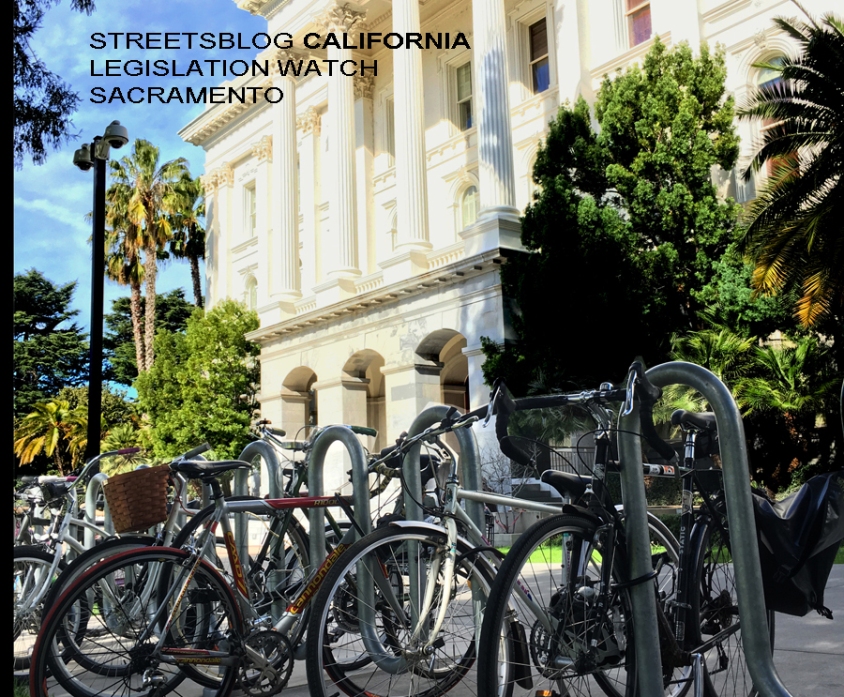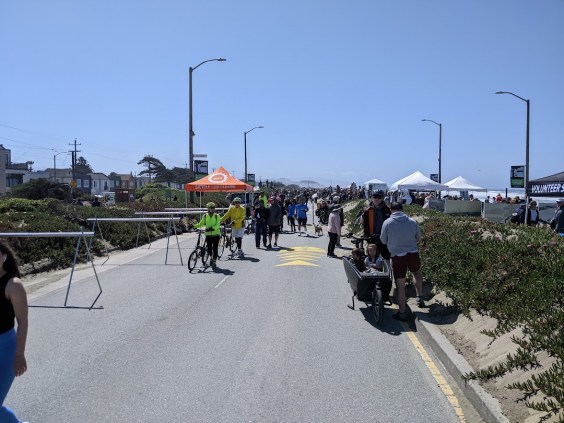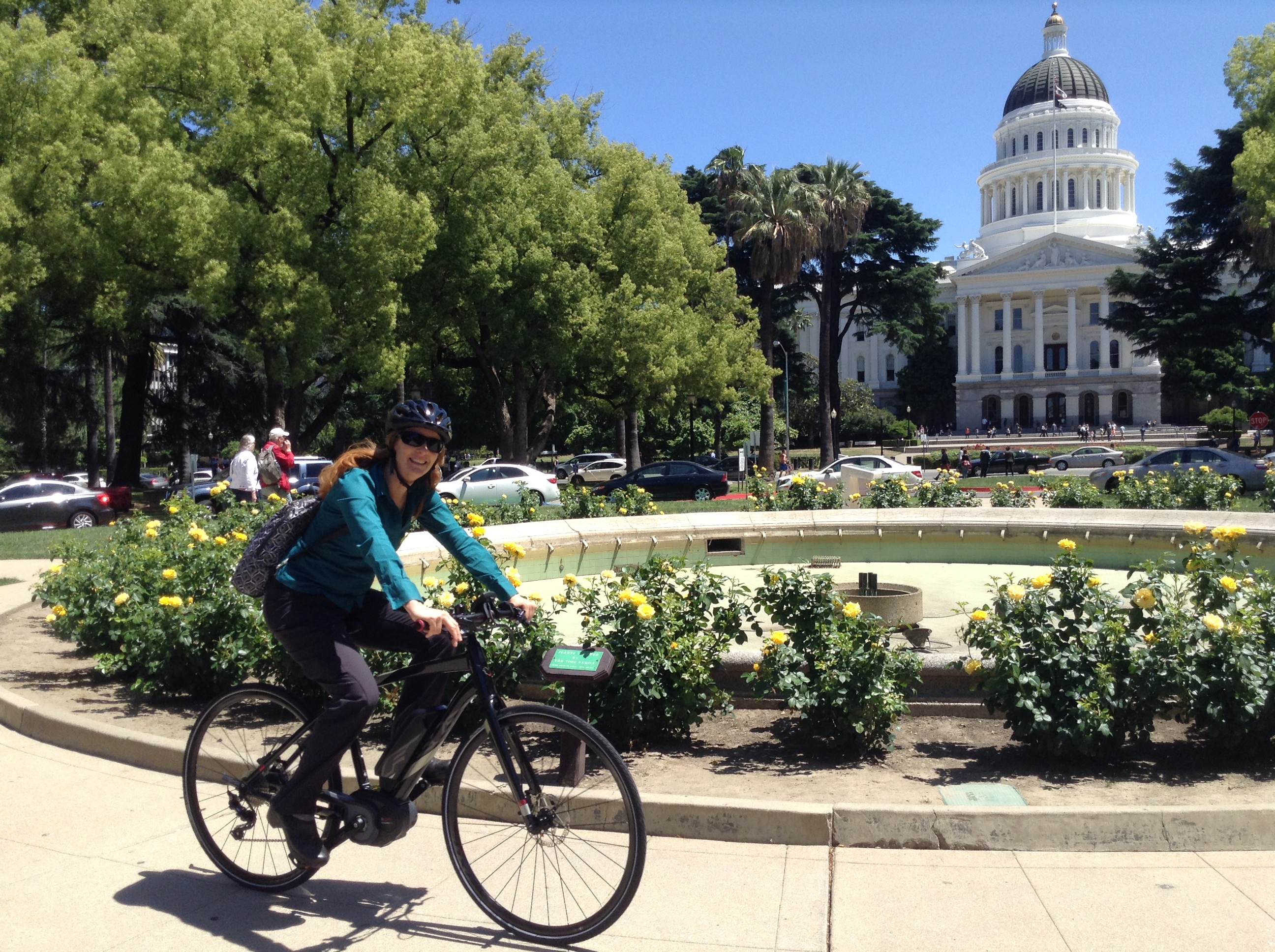A bill that was introduced last year - S.B. 768, from Senator Anna Caballero (D-Fresno) - attempted to exempt rural and suburban areas from new rules under the California Environmental Quality Act (CEQA). It didn't go anywhere, because as it was written it would have undermined the whole point of the rules, which are aimed at making it easier to build infill so people can afford to live closer to jobs and city center. They are also, consequently, forcing people who are used to building cheaply in outlying areas to reassess the impacts of what they're doing.
And they're not happy about it. Thus Senator Caballero's bill, which she said last year was in response to the way that the CEQA changes “severely penalized housing projects throughout the state” by requiring them to measure the amount of extra travel they would bring. She has now revived and amended the bill, and it passed its committee before the January 12 deadline for two-year bills.
Instead of finding ways to let rural and suburban areas sidestep the new rules, the rewritten bill calls for the California Air Resources Board to study how the new rule is being applied.
What are the environmental impacts of traffic?
Until very recently, under CEQA the only way transportation impacts were accounted for was by measuring "Level of Service" (LOS), which referred to how congested streets became as a result of a development. What this measure leaves out is any true measure of how much extra travel results, because it is only concerned with throughput. Its use led to "mitigations" like adding lanes and other methods that were aimed at reducing congestion - but not the amount of driving. In fact, those kinds of "mitigations," by making driving easier, led to a lot more driving. They also reduced the convenience and safety of walking and transit - and they led to a system in which it was way easier and cheaper to build sprawling suburbs than housing near jobs and city centers - leading to even more driving and to longer commutes.
That changed a few years ago with the passage of a new law that called for a better way to measure how traffic impacts the environment. After years of discussion, the replacement metric decided on was VMT, or Vehicle Miles Traveled.
That meant that development projects that had to address environmental impacts under CEQA now needed to talk about how many new miles of travel they would produce - and find ways to "mitigate" it. So instead of widening roads to increase vehicle throughput - something that is easier to do where land is relatively cheap and empty - developers and planners need to think about how people could get to and from the new developments via transit, or on foot or bike.
For a car-centric state like California, this has been a hard pill to swallow.
But the new rules are not rigid requirements. All they really do is force developers and planners to clearly address what the real environmental impacts are from driving - and make it a little less automatic to push those impacts off onto everyone so that people feel forced to drive, transit is more expensive and less efficient to provide, and walking and biking are a lot less safe and pleasant.
Rewriting the bill to call for a study of the way VMT is being used would bring a lot of benefits. According to the bill's analysis, there is currently no systematic study about how agencies are using VMT, nor comparing different approaches. Rural, suburban, and urban areas would all be differently impacted by the change, and knowing what it means for different kinds of jurisdictions can not only help explain the impact of the change but help make clear which "mitigations" are most effective.
As currently worded, the bill calls for CARB to:
- Study the impacts of the guidelines and how they are being used
- Analyze the methodologies used to create VMT reduction targets, and how mitigations are identified, measured, and deployed
- Analyze and compare the different mitigations used in rural and urban areas
- Analyze "the relationship between vehicle miles traveled reduction, greenhouse gas emissions reduction, housing, transportation, economic development, and equity"
- Review the implications of zero emission vehicles on future VMT
The rewritten bill merits close attention, especially given the conversation in last week's Senate Environmental Quality Committee hearing. Senator Caballero and the bill's supporters - including the California Builder's Association - insisted that sprawl housing is important because "it's the only housing people can afford."
Senator Caballero even admitted that in her area, Los Banos, "people drive further and further out so they can afford room for their kids - they don't spend any time with their kids, but they have space."
The whole point of this rule change is to help make it easier - and less expensive - to build where people don't have to drive so much, and where they have time to spend with their kids. It seems it will take time for people to understand that.
And a study of these issues can help.






